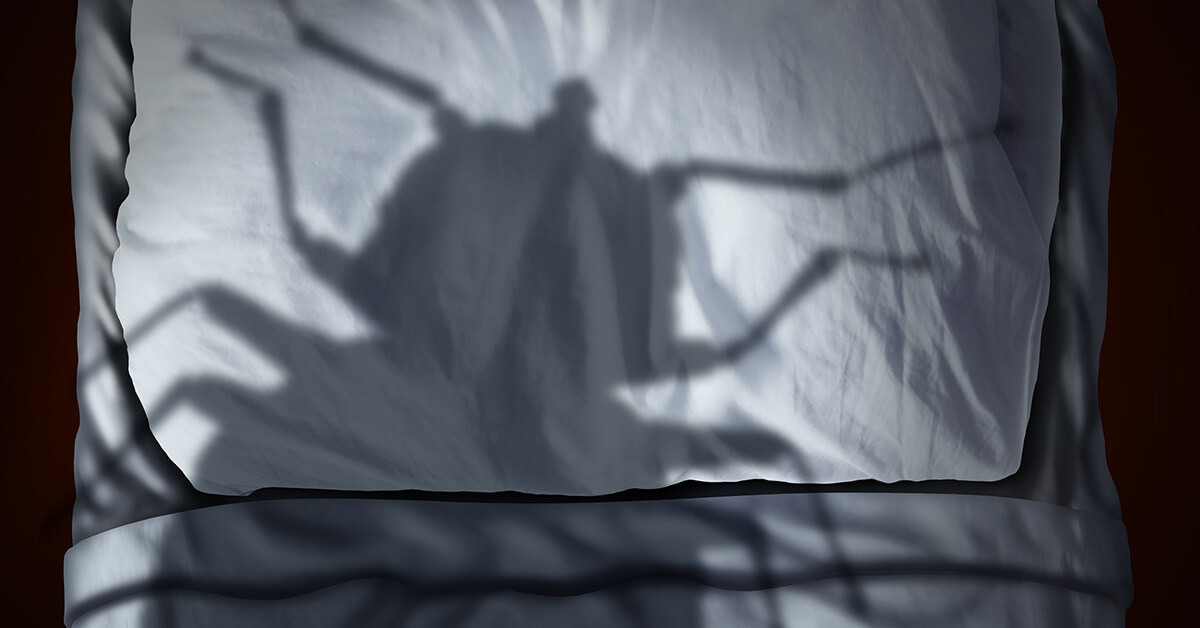Bedbugs: The Real Monsters Hiding in Your Room

It’s incredibly common for children to avoid bedtime due to fears of the dark or unseen “monsters” lying in wait. Maybe you’ve had to reassure your kids that these imaginary monsters aren’t real. Maybe you yourself needed reassuring when you were young.
Too bad all that reassuring wasn’t completely true.
As it turns out, nighttime monsters do exist… we call them bedbugs.
These tiny nightmares turn your bed—your safe space—into both their nest and their hunting grounds, with you as their prey.
Disconcerting to say the least, it’s no wonder that:

Bedbugs can cause psychological distress.
Across multiple studies, different researchers found that bedbug infestation survivors have higher rates of emotional distress, anxiety, insomnia, and even PTSD related to the bugs. Though alarming, this is definitely no surprise.
Bedbugs attack while humans are at their most vulnerable—asleep. Constant fear of being attacked by these monsters during the night would cause sleep disturbances for almost anyone.

Everyone is at risk for bedbugs, including you.
Hauling an infected mattress through your front door is not the only way to get bedbugs. Catching bedbugs can be as easy as leaving your purse in an infected room and inadvertently carrying a couple of critters home with you… they are experts at hiding after all.
They may be small, but you can take these measures to reduce your chances of a bedbug infestation:
- Before sleeping in a new place or bringing new furniture into your home, use a flashlight to thoroughly inspect for bedbugs or signs of the bugs (more on that in the next section).
- Heavily limit available hiding spots by using a protective cover on your mattress and box springs.
- Limit hiding areas even further by eliminating clutter around your home.
- Regularly vacuum well to remove any stray invaders.
- Be careful when using shared laundry facilities—keep everything in plastic bags while it is outside the washer or dryer.

You can (and will!) get rid of your bedbugs.
Aside from the increasing number of red, itchy marks on your body, bedbugs make their presence known through rust-colored spots on your sheets; a sweet, musty odor; the bugs’ molted exoskeletons; and even sightings of the devils themselves.
Short of immediately throwing away any infected furniture, don’t try to treat an invasion by yourself. You may accidentally spread the bugs throughout your home, worsening your problem. Contact a service that specializes in bedbug removal as soon as you can—the earlier you catch the invasion, the easier it is to treat.
For more great information on bedbugs, bedbug prevention, and bedbug treatment, check out the Environmental Protection Agency’s database on bedbugs—it’s an awesome resource with more information than you could think to ask for. These pernicious invaders may not spread disease or pose a serious physical threat, but they can rob you of your sense of security and cause psychological struggles… so take control today!
Sources: https://www.epa.gov/bedbugs https://www.epa.gov/bedbugs/protecting-your-home-bed-bugs https://www.epa.gov/bedbugs/do-it-yourself-bed-bug-control https://www.cdc.gov/parasites/bedbugs/faqs.html https://health.gov/myhealthfinder/topic/prevent-bed-bugs-quick-tips https://www.mayoclinic.org/diseases-conditions/bedbugs/diagnosis-treatment/drc-20370005 https://www.pestworld.org/all-things-bed-bugs/bed-bug-prevention/ https://www.theatlantic.com/health/archive/2014/10/bed-bug-madness-the-psychological-toll-of-the-blood-suckers/381447/

